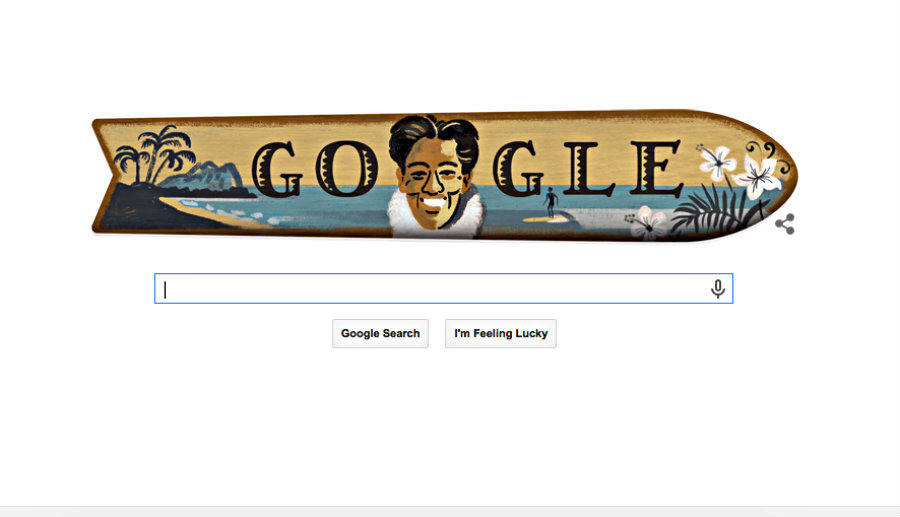Duke Kahanamoku and the one mile-long wave that made him a legend
Loading...
By the age of 22, Duke Kahanamoku was an Olympic gold medalist. By 27, he was a legend.
Today’s Google Doodle honors the 125th birthday of the man known as the “father of surfing,” whose skill and passion for the sport took him around the globe and whose achievements spanned everything from the Olympics to Hollywood to law enforcement.
Born in Hawaii on Aug. 24, 1890, Mr. Kahanamoku first made his mark as a swimmer, winning a gold medal in the 100-meter freestyle at the 1912 Olympics in Stockholm and then giving swimming and surfing demonstrations around the world. He was an early proponent of surfing, which he mastered while growing up on the shores of Waikiki.
In 1917, he caught the wave that would transform him from man to myth. The location was Castle’s, a place off Waikiki where the waves broke so far that surfers call the spot Steamer Lane because they have to wait near the shipping channel. Hawaiians originally called the place Kalehuawehe and for many, it is the holy grail of Oahu's south shore.
Kahanamoku’s wave – which he later told journalists could have been 30 feet high – carried him more than a mile from Castle’s into Publics, located off the public baths by Kapiolani Park, then into Cunha’s, named after a family with an estate at the water’s edge.
Connecting surf breaks and riding only a 16-foot-long, 114-pound redwood board without a skeg, or fin, Kahanamoku kept going through to Queen's and then to the edge of Canoes, where beach boys gave tourists rides in outrigger canoes.
In 1920, he returned to the Olympics, this time in Antwerp, Belgium, where he won two more gold medals in the men’s relay and 100-meter freestyle, breaking his own record in the latter. He would go on to win two silver medals in the 1924 Olympics in Paris.
Kahanamoku was also known for his tendency toward heroics. Early one morning in 1925, a sudden squall hit Newport Beach, taking down a 40-foot fishing vessel called the Thelma. The Duke, who was at the shore preparing for that day’s ride, swam into the storm and, with the help of three of his friends, saved 12 men from drowning in the Pacific, according to Google’s Doodle blog.
Kahanamoku was elected sheriff of his county 13 times, appeared in more than a dozen films, and is credited for helping Hawaii win statehood in 1959, Time magazine reports.
His legacy is currently being celebrated in an exhibit at Honolulu’s Bishop Museum exhibit, where Nov. 30, visitors can learn about his Olympic swimming victories, his stint in Hollywood, and the grace and dignity that made him the state's official “ambassador of aloha.”
Monday’s Doodle features an illustration by Matt Cruickshank, who depicted The Duke with his iconic 16-foot board and “his warm, blithe smile,” according to Google’s blog.
"I tell people that the ocean was his mistress and he had a lifelong love affair with it," Fred Hemmings, a former state senator and world champion surfer who knew Kahanamoku, said of Kahanamoku. "He was the highest example of being an ocean man. He was the world's fastest swimmer, the world's best surfer, one of the world's best canoe steersman."
This report contains material from the Associated Press.
[Editor's note: The original version of this story misstated that Hawaii won statehood in 1950, instead of 1959.]








